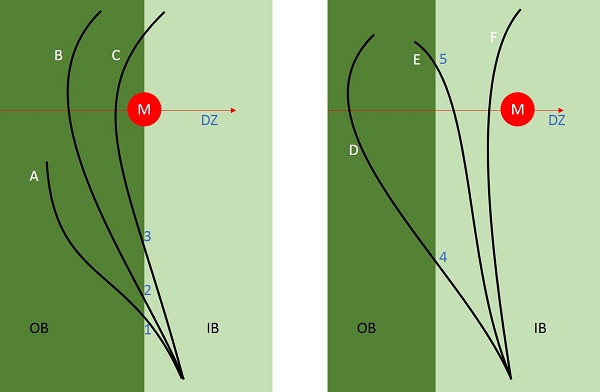I was absolutely blown away by Jason Allind's answer. Shocked, I tell you, shocked.
Given the Mando discussion on the
PDGA rules school, I interpret the rules as follows:
Flight A: Last IB at point 1, landed OB, never passed the mando line. Mark lie at Point 1.
Flight B: Last IB at point 2, landed OB, passed mando on wrong side. OB happened first. Mark lie at point 2.
Flight C: IB at point 3, re-entered IB, landed IB, passed mando on wrong side. Since it landed IB, there's no debate about which happened first. It's just a missed mando. Mark lie at DZ.
Flight D: Last IB at point 4, landed OB, passed mando on wrong side (same as flight B). OB happened first. Mark lie at point 4.
Flight E: Missed mando, last IB at point 5, landed OB. Missed mando happened first. Mark lie at DZ.
Flight F: Missed mando, never left IB at all. Mark lie at DZ.
Devan's shot was Flight B/D. Rules School
clearly states that you take which happened first and mark it at the last spot IB. The caddy book isn't explicit enough that all OB/missed mando shots should go to the drop zone to make that a viable solution.
(well, maybe you could argue it either way from the caddy book, but Jason Allind was absolutely wrong in his statement at 3:07:20 in the live broadcast.)
